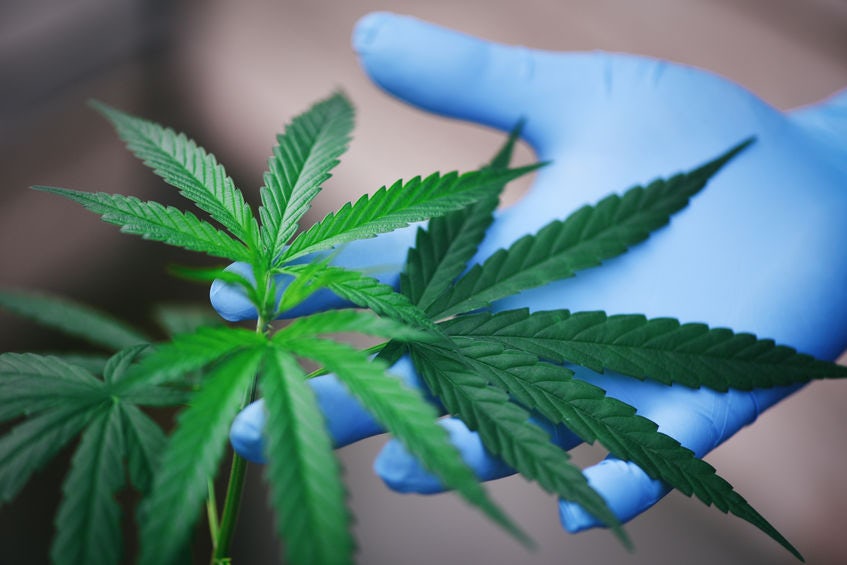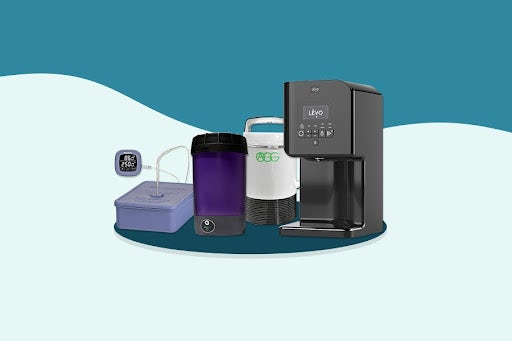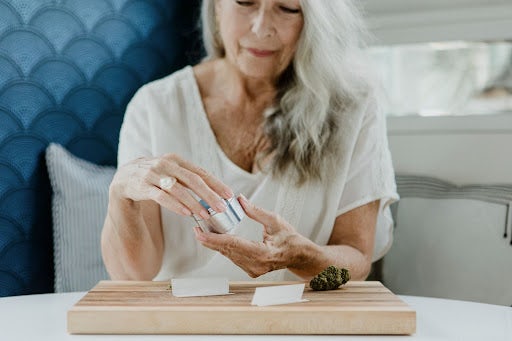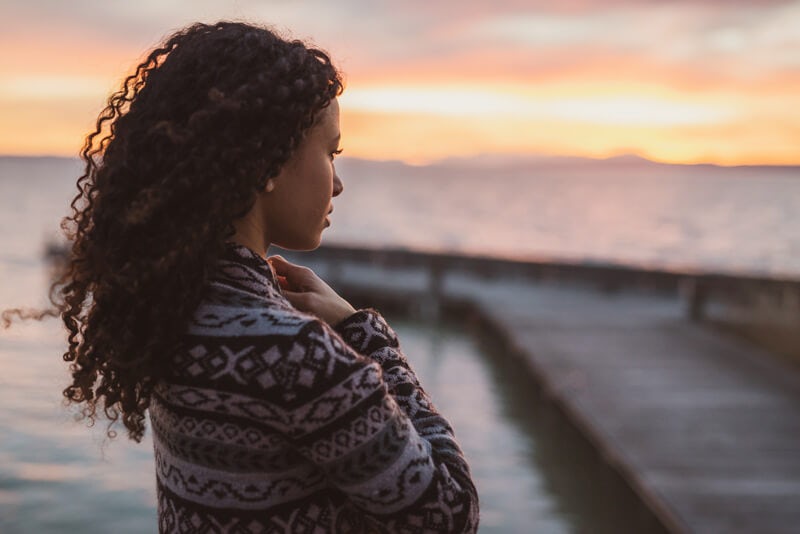PTSD, short for post-traumatic stress disorder, is a psychiatric disorder that will affect one in 11 people in the US at some point in their life. Though historically PTSD has been minimized or misclassified, it is now increasingly common to treat PTSD with cannabis.
A handful of both clinical and preclinical studies point to the conclusion that intentional cannabis use can alleviate many PTSD symptoms, including depression, anxiety, insomnia, and nightmares. But how can you be more confident that you’re using a strain that will help you feel better, and not make your PTSD symptoms worse?
The biggest factors in influencing your high are how much and what type of weed you use, as well as the symptoms you want to treat. Of the three types of strains (high THC, balanced, and high CBD), each one has a benefit in treating specific symptoms. There isn’t one singular strain that is best for treating PTSD, but rather certain chemical profiles to look for depending on what you’re treating.
As with all medicine, cannabis should be used mindfully, in the lowest amounts and frequencies to obtain the desired effects to prevent development of tolerance, minimize the downregulation of the endocannabinoid system, and reduce risk of developing Cannabis Use Disorder (CUD).
Below we’ve listed strain names to make it easier for you, but due to lack of regulation and standardized testing, strain names don’t really mean much. People can grow whatever they like and call it what they like, which complicates the process. But by having an understanding of the cannabinoid and terpene profile, you can simply use strain names as a starting point and explore the chemical profile of the chemovar from there.
Some of the stains mentioned include:
How cannabis can help with PTSD
The American Psychiatric Association defines PTSD as a psychiatric disorder that can occur in people who experience or witness a traumatic event. What constitutes a traumatic event can be a wide variety of experiences, but PTSD is perhaps best known historically as “shell shock” or “combat fatigue” in veterans. An estimated 3.5% of all American adults live with PTSD, and thousands more live with CPTSD, or complex post-traumatic stress disorder.
The APA defines four categories of PTSD symptoms:
- Reliving the event through intrusive thoughts, involuntary flashbacks or nightmares
- Avoiding memory or reaction triggers, including situations, places, people, objects, conversations, or activities,
- Negative changes in mood and thinking patterns, including negative thought loops, feelings of unworthiness, a sense of detachment from life, ongoing fear, guilt, horror, or shame, and inability to experience positive emotions.
- Negative changes in reactivity, including becoming irritable, behaving in a self-destructive way, having angry outbursts, trouble sleeping, being easily startled, becoming distrustful, or having problems concentrating.
So how can cannabis help with these symptoms?
Some scientists now believe that PTSD symptoms may be linked to an endocannabinoid deficiency. 1
The endocannabinoid system is involved with processing of fear, stress, and other emotions and studies have shown that lower levels of endocannabinoids may increase the retention of negative emotional memories, frequency of nightmares, and thoughts of suicide.
- A 2017 questionnaire study of 171 people with PTSD found that 77% of the participants experienced a reduction in PTSD symptoms after cannabis use. 2
- A 2014 retrospective study of 80 people found that people who used cannabis had a 75% reduction in PTSD symptoms as measured by a Clinician Administered Posttraumatic Scale. 3
Cannabis may help with involuntary flashbacks or vivid memories because it can slow down brain activity in the amygdala, the section responsible for emotions and memories. 4
Sleep can also be problematic for people with PTSD, with many people experiencing vivid and often recurring nightmares. THC is known to suppress REM sleep, the sleep cycle where dreams and nightmares happen, which can be beneficial to people suffering from recurring nightmares. 5
Some people with PTSD also report insomnia, or trouble sleeping and THC is thought to shorten the time it takes to fall asleep. 6 CBD is also associated with maintaining sleep.
How to choose cannabis strains for anxiety
While the common conversation about cannabis is still centered on the indica/sativa divide, this is not the best way to pick your strains. Indica and sativa are plant names that were originally based on leaf and plant shape (morphology), rather than indicators of the chemical composition of the strain. Choosing your marijuana based on chemovars is more accurate to predict the type of response you’ll have to a strain.
There are three major cannabis chemotypes categories:
- Type I: High THC, low CBD
- Type II: Balanced THC and CBD (roughly 1:1 ratio)
- Type III: High CBD, low THC
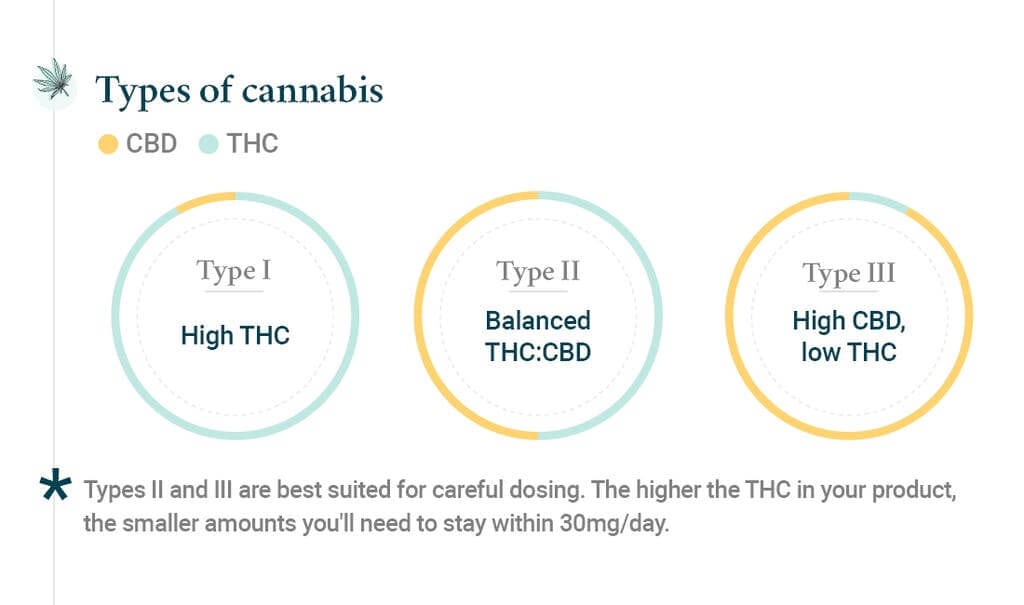
Which chemovar is best for you depends on what symptoms you’re looking to treat.
Type I is the most common chemotype on the market right now, due to the popularity of high potency THC. But that doesn’t necessarily make it the best chemovar for you. The types of cannabis you choose to help mitigate PTSD symptoms depends on which symptoms you’re treating and what helps anxiety may not be the same strain as what helps you sleep.
- Type I strains can help you fall asleep faster and may reduce nightmares, but also has the potential to worsen anxious thoughts, paranoia, and depressive tendencies. 7
- Type II strains can reduce depressive feelings 8 and provide assistance with day-to-day functionality. 9 However some people find the CBD content to be stimulating, and for others, the THC levels may still be too high.
- Type III strains can combat anxiety and provide mood stabilizing effects, and may provide assistance with staying asleep with little-to-none of the intoxicating effects from THC. On the flip side, some people do report stimulating effects from type III products

When choosing weed for dealing with anxiety or depression, look for terpenes that act as antidepressants and anxiety reducers:
When choosing a strain for sleep troubles, look for terpenes with sedative effects:
These terpenes are currently being researched and many studies are still in the pre-clinical phases, which means they don’t use human subjects. This body of information is rapidly growing and changing, so there’s still a lot we don’t know. Take the following research into consideration to help you narrow the possibilities while remembering everyone’s endocannabinoid system is unique.
Best terpenes for anxiety
Consider: beta-caryophyllene, linalool, limonene
- A study on mice showed beta-caryophyllene had an anxiolytic (anxiety reducing) effect by interacting with certain receptors in the endocannabinoid system. 10
- Limonene epoxide, a derivative of limonene, was found to have an anxiolytic effect on mice in a preclinical study. 11
- Inhaled linalool showed a relaxing and anxiety-reducing effect on mice in a preclinical study. 12
Best terpenes for depression
Consider: beta-caryophyllene, pinene, linalool, limonene
- The same study that showed beta-caryophyllene has an anxiety reducing effect also showed it had an anti-depressive effect through interaction with the CB2 receptor.
- A preliminary human study showed limonene has an antidepressant effect and may help “normalized neuroendocrine hormone levels.” 13
- Linalool and beta-pinene showed “antidepressant-like activity” in a preclinical study on rodents. 14
Best terpenes for sleep
Consider: Myrcene, linalool, beta-caryophyllene
- Myrcene was found to have “sedative as well as motor relaxant effect” in one preclinical study. The authors noted that in high doses, myrcene may have an anxiogenic or anxiety-increasing effect. 15
- Multiple studies have shown Linalool has an anti-anxiety effect as well as a sedative effect. 16
- A preclinical study found beta-caryophyllene decreased the delay in falling asleep and increased sleep time in mice. 17
Typically, a cannabis strain will have one dominant terpene above 1% and a few other terpenes between 0.1 – 1%. While it’s unclear how much terpene must be present to influence how a cultivar (strain) will make you feel, generally terpenes are of pharmacological interest at concentrations of 0.05% and higher.
Most terpenes, except beta-caryophyllene, evaporate away as weed ages, and the storage environment, especially humidity, is a major factor in how well your weed ages. Optimal storage preserves terpene content, which is why proper weed storage is so important.
Don’t think you have to rely solely on weed to get the benefits from terpenes. These smelly plant molecules are all around us, from the air we breathe to the food that we eat. You can get pinene from pine nuts, smelling pine resin or crushed pine needles. You can get linalool from drinking lavender tea, or smelling lavender flowers or lavender oil. You can get limonene from scratching and sniffing citrus peels. You could also consider purchasing essential oils and using a diffuser to help benefit from the terpenes in the oil.
Best strains for PTSD symptoms
Strain reviews from The Cannigma are based on averages from product testing across the same name. But since there is no standardized averages or testing, the exact chemical makeup of your strains will vary.
With this in mind, the following list of cannabis strains is a good starting place to narrow your options, but don’t get caught up on the strain names. Focus on finding the reliable product or at least the optimal cannabinoid ratio blend and terpene profile you have in mind. You can also make your own mixtures of strains.
Strains that can help with anxiety
The best strains for combating anxiety will be Type II (a balance of CBD and THC) or Type III (CBD-dominant). Look for strains with pinene and linalool. You can also look for beta-caryophyllene, but this may be more sedative than functional. Chemovars that have a similar profile to this include Harlequin and Harmony Rose.
Strains that can help with depression
The best strains for treating depressive symptoms are Type III, with very little THC and the presence of pinene, linalool, and limonene. ACDC and Cannatonic are typically high in pinene with low THC, but there are a number of strains out there. Feel empowered to look at the Certificate of Analysis and find something similar in your area. .
Strains that can help with sleep
Chemovars to help with sleep are Type I or Type II as the presence of THC can have sedating effects. Myrcene and beta-caryophyllene can increase these effects, helping you nod off with little effort. Chemovars that have similar profiles to this include Pennywise, Critical Mass, and Hindu Kush.
Sources
- Kondev V, Winters N, Patel S. Cannabis use and posttraumatic stress disorder comorbidity: Epidemiology, biology and the potential for novel treatment approaches. Int Rev Neurobiol. 2021;157:143-193. doi: 10.1016/bs.irn.2020.09.007. Epub 2021 Jan 19. PMID: 33648669.
- Drost L, Wan B, Chan S, et al. Efficacy of different varieties of medical cannabis in relieving symptoms in post-traumatic stress disorder (PTSD) patients. J Pain Manage. 2017;10
- Greer GR, Grob CS, Halberstadt AL. PTSD symptom reports of patients evaluated for the New Mexico Medical Cannabis Program. J Psychoactive Drugs. 2014;46:73–77.
- Rabinak CA, Blanchette A, Zabik NL, Peters C, Marusak HA, Iadipaolo A, Elrahal F. Cannabinoid modulation of corticolimbic activation to threat in trauma-exposed adults: a preliminary study. Psychopharmacology (Berl). 2020 Jun;237(6):1813-1826. doi: 10.1007/s00213-020-05499-8. Epub 2020 Mar 11. PMID: 32162103; PMCID: PMC7244361.
- M Carr, R Borcsok, M Taylor, S Segust, W Pigeon, C Bradshaw, 0159 Reduced REM Sleep Percent in Frequent Cannabis Versus Non-Cannabis Users, Sleep, Volume 43, Issue Supplement_1, April 2020, Pages A62–A63, https://doi.org/10.1093/sleep/zsaa056.157
- Babson KA, Sottile J, Morabito D. Cannabis, Cannabinoids, and Sleep: a Review of the Literature. Curr Psychiatry Rep. 2017 Apr;19(4):23. doi: 10.1007/s11920-017-0775-9. PMID: 28349316.
- Danielsson, Lundin, Agardh, Allebeck, & Forsell. (2016) Cannabis use, depression and anxiety: A 3-year prospective population-based study, Journal of Affective Disorders, Volume 193, Pages 103-108, ISSN 0165-0327,https://doi.org/10.1016/j.jad.2015.12.045.
- de Mello Schier AR, de Oliveira Ribeiro NP, Coutinho DS, Machado S, Arias-Carrión O, Crippa JA, Zuardi AW, Nardi AE, Silva AC. Antidepressant-like and anxiolytic-like effects of cannabidiol: a chemical compound of Cannabis sativa. CNS Neurol Disord Drug Targets. 2014;13(6):953-60. doi: 10.2174/1871527313666140612114838. PMID: 24923339.
- Larsen, C., & Shahinas, J. (2020). Dosage, Efficacy and Safety of Cannabidiol Administration in Adults: A Systematic Review of Human Trials. Journal of clinical medicine research, 12(3), 129–141. https://doi.org/10.14740/jocmr4090
- Bahi, A., Al Mansouri, S., Al Memari, E., Al Ameri, M., Nurulain, S. M., & Ojha, S. (2014). β-Caryophyllene, a CB2 receptor agonist produces multiple behavioral changes relevant to anxiety and depression in mice. Physiology & behavior, 135, 119–124. https://doi.org/10.1016/j.physbeh.2014.06.003
- de Almeida, A. A., Costa, J. P., de Carvalho, R. B., de Sousa, D. P., & de Freitas, R. M. (2012). Evaluation of acute toxicity of a natural compound (+)-limonene epoxide and its anxiolytic-like action. Brain research, 1448, 56–62. https://doi.org/10.1016/j.brainres.2012.01.070
- Linck VM, da Silva AL, Figueiró M, Caramão EB, Moreno PR, Elisabetsky E. Effects of inhaled Linalool in anxiety, social interaction and aggressive behavior in mice. Phytomedicine. 2010 Jul;17(8-9):679-83. doi: 10.1016/j.phymed.2009.10.002. Epub 2009 Dec 3. PMID: 19962290.
- Komori T, Fujiwara R, Tanida M, Nomura J, Yokoyama M, M: Effects of Citrus Fragrance on Immune Function and Depressive States. Neuroimmunomodulation 1995;2:174-180. doi: 10.1159/000096889
- Guzmán-Gutiérrez, S. L., Bonilla-Jaime, H., Gómez-Cansino, R., & Reyes-Chilpa, R. (2015). Linalool and β-pinene exert their antidepressant-like activity through the monoaminergic pathway. Life sciences, 128, 24–29. https://doi.org/10.1016/j.lfs.2015.02.021
- do Vale TG, Furtado EC, Santos JG Jr, Viana GS. Central effects of citral, myrcene and limonene, constituents of essential oil chemotypes from Lippia alba (Mill.) n.e. Brown. Phytomedicine. 2002 Dec;9(8):709-14. doi: 10.1078/094471102321621304. PMID: 12587690.
- Linck VM, da Silva AL, Figueiró M, Piato AL, Herrmann AP, Dupont Birck F, Caramão EB, Nunes DS, Moreno PR, Elisabetsky E. Inhaled linalool-induced sedation in mice. Phytomedicine. 2009 Apr;16(4):303-7. doi: 10.1016/j.phymed.2008.08.001. Epub 2008 Sep 27. PMID: 18824339.
- Galdino, Nascimento, Florentino, Lino, Fajemiroye, Chaibub, de Paula, de Lima, & Costa. (2012)The anxiolytic-like effect of an essential oil derived from Spiranthera odoratissima A. St. Hil. leaves and its major component, β-caryophyllene, in male mice,Progress in Neuro-Psychopharmacology and Biological Psychiatry,Volume 38, Issue 2, Pages 276-284, ISSN 0278-5846,https://doi.org/10.1016/j.pnpbp.2012.04.012.
Sign up for bi-weekly updates, packed full of cannabis education, recipes, and tips. Your inbox will love it.

 Shop
Shop Support
Support
